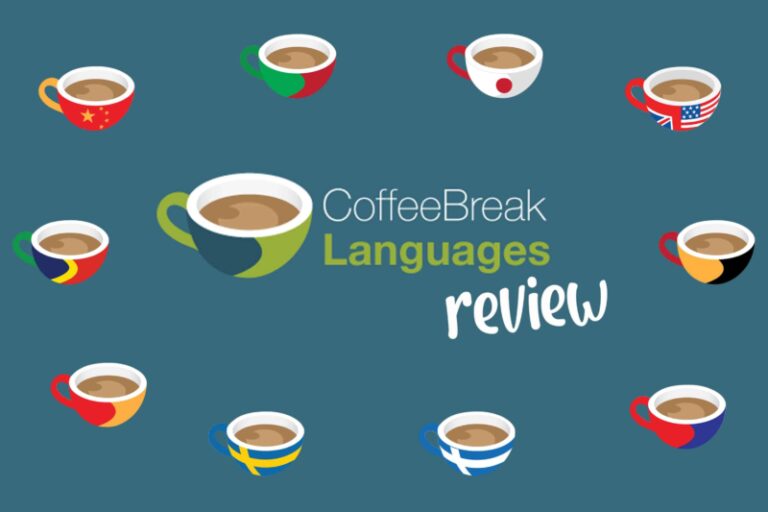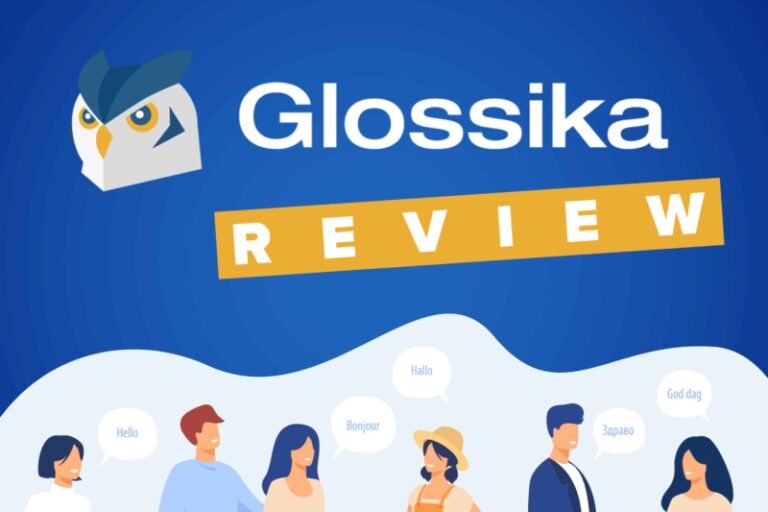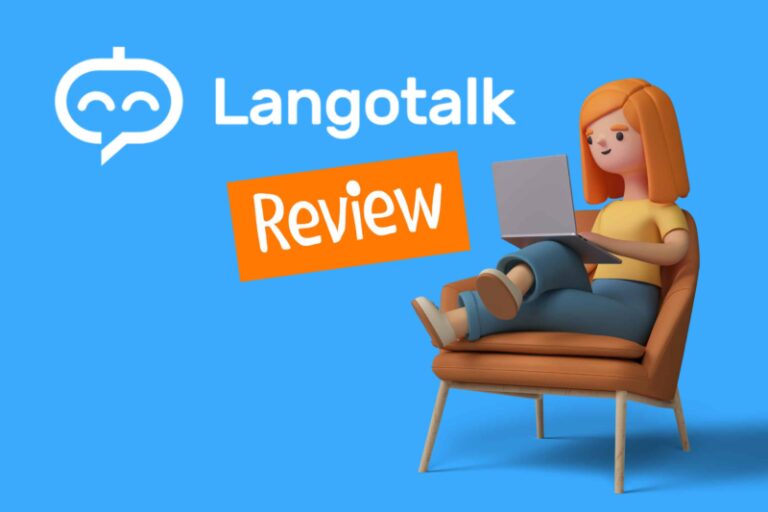Contents
- What is Dreaming Spanish?
- What is the Dreaming Spanish Method and Does It Work?
- The Features of Dreaming Spanish
- How Much Does Dreaming Spanish Cost?
- Is the Premium Version of Dreaming Spanish Worth It?
- Pros of Dreaming Spanish
- Cons of Dreaming Spanish
- Dreaming Spanish Alternatives
- Final Thoughts: Should You Use Dreaming Spanish?
Dreaming Spanish Review: The Best Resource for Comprehensible Input, But Speaking is Undervalued
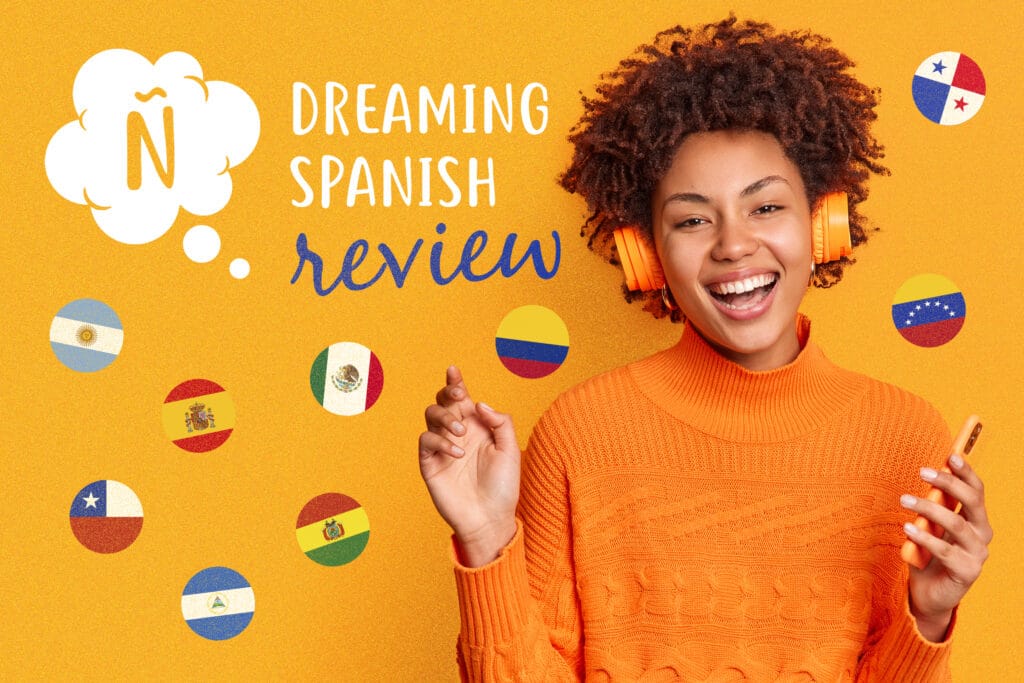
Growing up as a “no sabo kid”—my dad is from Venezuela, but never taught me Spanish—I was exposed to Spanish but developed a fear of speaking it. So when I came across Dreaming Spanish, I was highly skeptical of its listen-only, speak-later method.
But after testing the program as a now fluent Spanish speaker, I ended up paying for the monthly subscription.
Overview
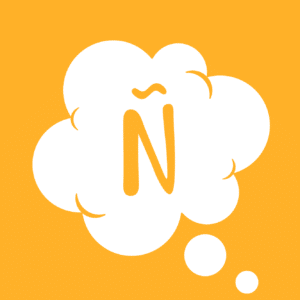
Name: Dreaming Spanish
Description: Dreaming Spanish is a website that teaches Spanish solely through comprehensible input. There are videos for all levels and they claim they can take you to "comparable to a native speaker."
Offer price: Some free content; monthly subscription for $8/month
Summary
Dreaming Spanish uses the comprehensible input method to teach Spanish. The platform has tons of videos and designed playlists for all levels, starting at absolute beginner and ending with advanced. The progress tracking feature counts the hours you’ve listened to Spanish content on and outside of the platform, and after achieving 1,500 hours of watch time, they say you’ll be comparable to a native speaker. But for me, the listen-only, speak-later methodology delays speaking a little too much.
-
User friendliness - 10/1010/10
-
Delivers on promises - 9/109/10
-
Authenticity - 9/109/10
-
Value for price - 10/1010/10
Pros
- The comprehensible method works and is backed by science
- Available for all levels
- Pre-designed structure that guides you
- Insightful progress tracking measurements
- Genuinely interesting videos
- The beginner videos are effective and not boring
- Exposure to multiple accents and cultures
Cons
- It takes a lot longer than traditional studying
- Speaking is delayed and undervalued
- No mobile app
Download: This blog post is available as a convenient and portable PDF that you can take anywhere. Click here to get a copy. (Download)
What is Dreaming Spanish?
Dreaming Spanish is a website that teaches Spanish through comprehensible input.
You start watching videos completely in Spanish on day one. The videos expose you to Spanish just above your level so that you can naturally acquire the language exactly how native speakers learn as babies.
There are more than 3,000 videos on Dreaming Spanish’s website and three new videos are added daily to every level.
They break down Spanish into four level categories and seven levels in total:
- Superbeginner (Level 1)
- Beginner (Level 2)
- Intermediate (Levels 3 & 4)
- Advanced (Levels 5, 6 & 7)
Each category has organized video playlists that guide you through the language until you’ve racked up enough input hours to move on to the next level.
What is the Dreaming Spanish Method and Does It Work?
“Comprehensible input” is the backbone of Dreaming Spanish’s methodology. It’s a theory introduced by Dr. Stephen Krashen that you should acquire a language instead of learning it.
You do this by consuming content slightly above your current level causing you to acquire new words and grammar, learning them in context. You won’t understand everything, but you understand enough to know what’s going on.
Acquiring the language involves consuming it and never doing any type of traditional study activities. The argument is that this is how we learn our native language, so it should be how we learn our new language(s).
Learning is the opposite—studying grammar, vocabulary lists, completing exercises, etc.
How Dreaming Spanish Uses Comprehensible Input to Teach Spanish
Dreaming Spanish explains how to use their videos and how the comprehensible input method works on their “Method” page.
They explain that by immersing yourself in Spanish from day one—using comprehensible input for absolute beginners—you will form brain patterns with words and structures that you see over and over again. The patterns you form will be similar to what happens to a native speaker’s brain when they learn Spanish as a baby.
You’re only supposed to watch the Dreaming Spanish videos. You don’t study them, answer comprehension questions, write down new words—nothing except pay attention and watch.
They discourage conversation or speaking practice until you’ve achieved at least 300 hours of comprehensible input through the videos.
Once you’ve reached the 300-hour mark, conversation becomes optional. But they really don’t recommend conversation or reading until 600 hours. This is because you supposedly haven’t yet acquired enough of the language to have meaningful conversations. So speaking too early would force you to make connections with your native language, and reading before you know exactly how Spanish sounds can negatively affect your pronunciation.
Here’s a chart they include on their “Method” page breaking down each level:
As you progress, you’ll start to be able to acquire more complex words that don’t have exact translations or that have grammatical functions. Once you’ve reached Level 3, you’ll start acquiring verb conjugations, word order and other grammar patterns without ever having to study them.
The Features of Dreaming Spanish
Leveled Video Series and Playlists
Each level category—Superbeginner, Beginner, Intermediate and Advanced—has a collection of video playlists and series. You can find them by navigating to the “Series” tab in the left sidebar.
You can save series to your “Library” to easily access them. Each series contains a certain number of episodes ranging from a few minutes to 30-40 minutes long (depending on the level and series).
The goal is to get through as many videos and series that interest you as possible until you reach enough hours to move on to the next level.
Right now, I’m working through three series in the Advanced category—one about relationship issues, a podcast-style series discussing life and social topics, and a series debating social issues.
The videos feel like a natural progression. I easily enjoy them, and I never stress about not understanding something. And they’re genuinely interesting. I can easily spend an hour or two watching them when I have time on my hands.
Tons of Video Filtering Options
Dreaming Spanish has various filters you can use to find the perfect video to watch next. There are six filters:
- Sort by. This lets you choose the order you want the video search results to be displayed. The options are “Random,” “New,” “Old,” “Easy,” “Hard,” “Short” and “Long.”
- Levels. Choosing a level only shows you videos that belong to that level. For example, I select “Advanced” to only be shown videos in Levels 5, 6 and 7.
- Countries. As of April 2024, Dreaming Spanish has videos from creators in Argentina, Bolivia, Chile, Colombia, Mexico, Nicaragua, Panama, Spain and Venezuela.
- Guides. These are the people featured in the videos. For example, Agustina is a guide from Argentina and Michelle is a guide from Mexico.
- Topics. Dreaming Spanish has tons of topics to choose from—too many to list here. But some examples include 18+, art, business, challenges, conversations, crime, cooking, culture, daily life, environment, etc.
- Sound. The only two options for the sound filter are “Podcast-friendly” and “Other.”
Detailed Progress Report
Clicking the “Progress” bar brings you to a detailed report that shows:
- Progress toward your daily goal
- Your current streak
- The days of the month you’ve practiced (and for how long)
- Your current level and amount of watch hours
- How many hours you have left until you reach the next level
- And more
There’s also a detailed breakdown of each level, which explains how comfortable you are with Spanish at each one, how many input hours it takes to achieve them and roughly how many words you know.
There’s also an option to add hours outside the platform. So if you’ve watched a movie, TV show, YouTube video, etc., you can log the time you spent watching it and a description.
There’s an option to log hours spent talking with friends, although once again, this isn’t recommended until at least Level 3.
I also personally recommend that if you’re going all-in with comprehensible input and following Dreaming Spanish’s methodology to a tee, you should stick to watching Dreaming Spanish-only videos until you’re at a high intermediate or advanced level.
It’s difficult to find input comprehensible enough for beginners from authentic sources like YouTube, and the goal of tracking your input hours is to make real progress moving through your current level. If you spend too much time on content that’s too advanced, that progress isn’t actually being made.
12-Part Video Series on How to Learn a Language
Dreaming Spanish offers a free mini-course that explains step-by-step how to learn a language through comprehensible input. The videos are in Spanish with English subtitles, and there are 12 videos in the course.
The videos are short, between four and 11 minutes long (aside from the last two FAQ videos, which are 21 minutes each).
How Much Does Dreaming Spanish Cost?
There’s a free version of Dreaming Spanish, which lets you watch a limited amount of videos. Subscribing to the Premium version is $8 per month.
Premium gives you access to all 3,000+ videos. It also lets you download videos to watch offline, get three new videos per level daily and listen to their premium podcast feed on podcasting apps.
Is the Premium Version of Dreaming Spanish Worth It?
After a few days of using Dreaming Spanish, I signed up for the Premium version and would definitely say it’s worth it—especially for beginners.
I say this because there’s a limited amount of sources available with comprehensible input for beginners. Many people say you should start with children’s media—like cartoons and children’s books—but these are boring for adults.
The intermediate and advanced levels mostly benefit from the detailed progress tracking and ensuring that the content is not too easy but not too hard.
Pros of Dreaming Spanish
- Comprehensible input works. The method Dreaming Spanish uses is hands-down effective. So whether you’re using only Dreaming Spanish or other resources alongside it, you will reap benefits from consistently watching the videos.
- Available for all levels. Whether you know zero Spanish words or you’re already conversationally fluent, you can spend hundreds of hours watching videos on Dreaming Spanish.
- Pre-designed structure that guides you. Dreaming Spanish isn’t a course by any means, but there’s a clear path that gets you from point zero to advanced. You know exactly when you’ve reached the “hour” milestones, how it correlates to your level and when you’ve moved up levels. All you have to do is show up and log your hours.
- Insightful progress tracking measurements. The progress tracking is very motivational. Even when you have a few hundred hours until you reach the next level, it’s addicting to see your hours accumulate.
- Genuinely interesting videos. I can watch almost anything on YouTube without subtitles (in English or Spanish), with no issue. But after starting my first series (“Relationship Problems”), I often choose to watch Dreaming Spanish videos over my YouTube subscriptions. I love casual videos that make me feel like I’m part of a natural, meaningful conversation. And that’s exactly what the advanced series have done for me.
- The beginner videos are effective and not boring. I watched a video from the Superbeginner series “About Shel,” and I was impressed with how the video host—Shel, from Colombia—balanced interesting topics with easy-to-understand Spanish, assuming you know nothing. Plus, the Superberginner videos are only four to five minutes long, making it easy to stay focused and relaxed while watching.
- Exposure to multiple accents and cultures. Dreaming Spanish tags all of their videos with which country the video host is from, so you can easily choose which accent you want to get used to hearing.
Cons of Dreaming Spanish
- It takes a lot longer than traditional studying. Acquiring a language takes a long time—much longer than creating flashcards and memorizing 20 words in a day. Comprehensible input requires you to be extremely patient. For example, Dreaming Spanish estimates it takes 150 hours to go from “Superbeginner” to “Beginner.” If you watch their videos for one hour a day, it’ll take you 150 days to reach the Beginner level—which is five months. Reaching the top level (where your comprehension is comparable to a native speaker) takes 1,500 hours of input, which would be around 50 months (over four years) at one hour a day.
- Speaking is delayed and undervalued. Dreaming Spanish fully accepts and admits that your speech will be delayed. It’s supposed to be delayed as part of their method. They have solid arguments for this, and I’m not saying it’s wrong—just that you won’t be able to have conversations until around 300 hours of study (10 months at one hour per day) at the earliest. For me, this would be very demotivating and frustrating—especially as someone learning Spanish to communicate with her family and connect with her heritage.
- No mobile app. If you want to use Dreaming Spanish on your phone, you’ll have to go to Safari and use the web version. I’ve found the videos load slower when I do this, and it’s a bit annoying.
Dreaming Spanish Alternatives
Lingopie
Lingopie takes a similar immersion-based approach as Dreaming Spanish, but all their videos are subtitled. The program encourages you to click on words you don’t know in the subtitles to see their translations and add them to a flashcard deck.
Most of the videos are full-length episodes of TV shows, usually ranging from 20-60 minutes long.
Lingopie does have beginner-friendly videos, but there aren’t very many. And their goal isn’t to teach you Spanish from scratch. So I wouldn’t recommend it for beginners.
FluentU
FluentU uses authentic videos to immerse you in Spanish. Unlike Lingopie, the videos aren’t long-form—in this sense, it’s closer to Dreaming Spanish’s easy-to-digest videos.
FluentU also has options for beginners through advanced, meaning you can start using the program without any prior Spanish knowledge.
There’s an enormous variety of learning tools—personalized quizzes, flashcards, a video-based dictionary, etc. So if you prefer a mix of active learning and comprehensible input—but in videos that you can easily squeeze into a packed schedule—FluentU might be the best option for you.
Here’s a beginner comprehensible input video from the FluentU Spanish YouTube channel that gives you an idea of how the program works:
Babbel
Babbel is a structured language course that incorporates grammar and vocabulary into conversation-based lessons. It’s not video-based and implements traditional learning methods like exercises, drills and quizzes.
They also have “Babbel Live,” which lets you take live online Spanish classes from expert teachers.
Unlike Dreaming Spanish, Babbel’s focus is on getting you speaking fast. So if you need to learn Spanish urgently or you prefer speaking-based learning methods, Babbel might be better suited for you.
Final Thoughts: Should You Use Dreaming Spanish?
Dreaming Spanish is the best resource I’ve found for learning Spanish solely through comprehensible input. If you’re all about this methodology, Dreaming Spanish is worth every cent of that $8/month subscription hands down.
But personally, I would use Dreaming Spanish in conjunction with other traditional learning methods if you’re serious about making fast progress (I can’t imagine making myself wait 600 hours before attempting a conversation).
The videos are interesting, the method is effective and the progress trackers are addicting—and it’s only $8 a month. So I would recommend Dreaming Spanish, no matter your level.
These are my thoughts on Dreaming Spanish, and I hope my experience has helped you come to your own conclusions.
No matter what level you’re currently at, exposure to native Spanish is essential to improving, but immersion can be difficult when you’re not advanced yet. Dreaming Spanish could be just the resource you need to achieve that comprehensible exposure.
